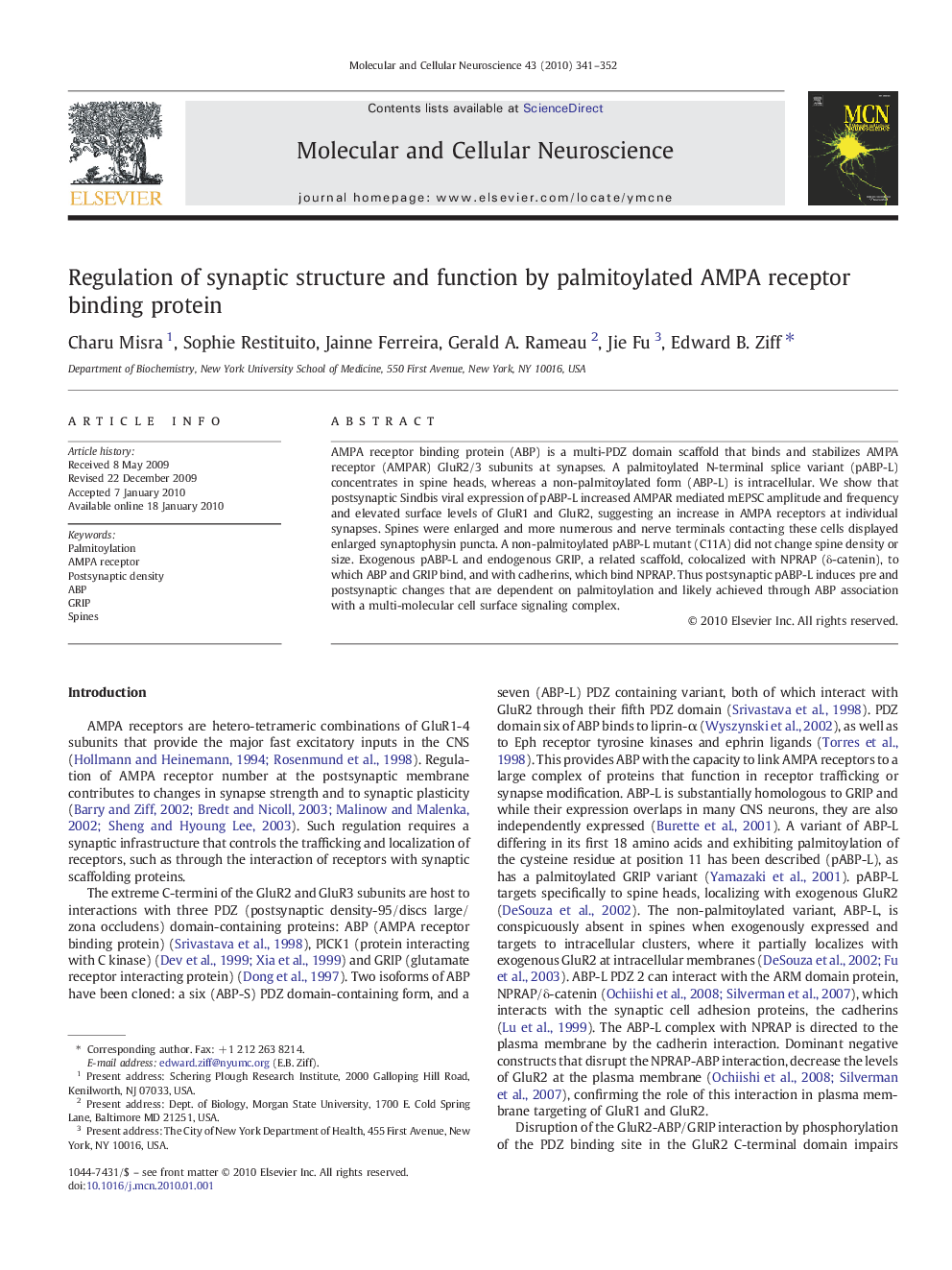| Article ID | Journal | Published Year | Pages | File Type |
|---|---|---|---|---|
| 2198787 | Molecular and Cellular Neuroscience | 2010 | 12 Pages |
AMPA receptor binding protein (ABP) is a multi-PDZ domain scaffold that binds and stabilizes AMPA receptor (AMPAR) GluR2/3 subunits at synapses. A palmitoylated N-terminal splice variant (pABP-L) concentrates in spine heads, whereas a non-palmitoylated form (ABP-L) is intracellular. We show that postsynaptic Sindbis viral expression of pABP-L increased AMPAR mediated mEPSC amplitude and frequency and elevated surface levels of GluR1 and GluR2, suggesting an increase in AMPA receptors at individual synapses. Spines were enlarged and more numerous and nerve terminals contacting these cells displayed enlarged synaptophysin puncta. A non-palmitoylated pABP-L mutant (C11A) did not change spine density or size. Exogenous pABP-L and endogenous GRIP, a related scaffold, colocalized with NPRAP (δ-catenin), to which ABP and GRIP bind, and with cadherins, which bind NPRAP. Thus postsynaptic pABP-L induces pre and postsynaptic changes that are dependent on palmitoylation and likely achieved through ABP association with a multi-molecular cell surface signaling complex.
